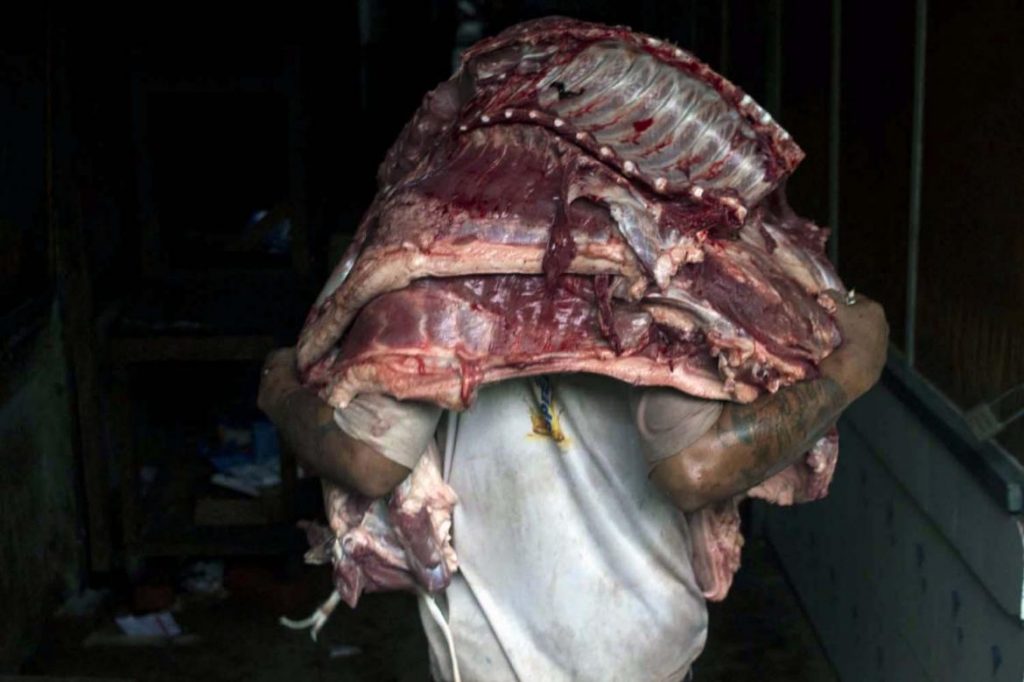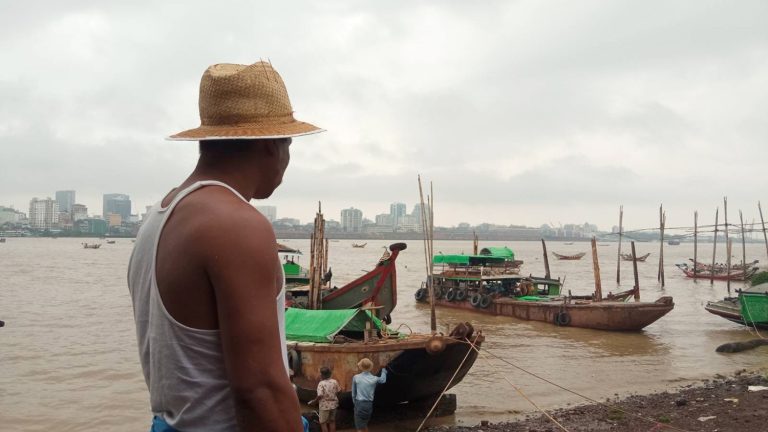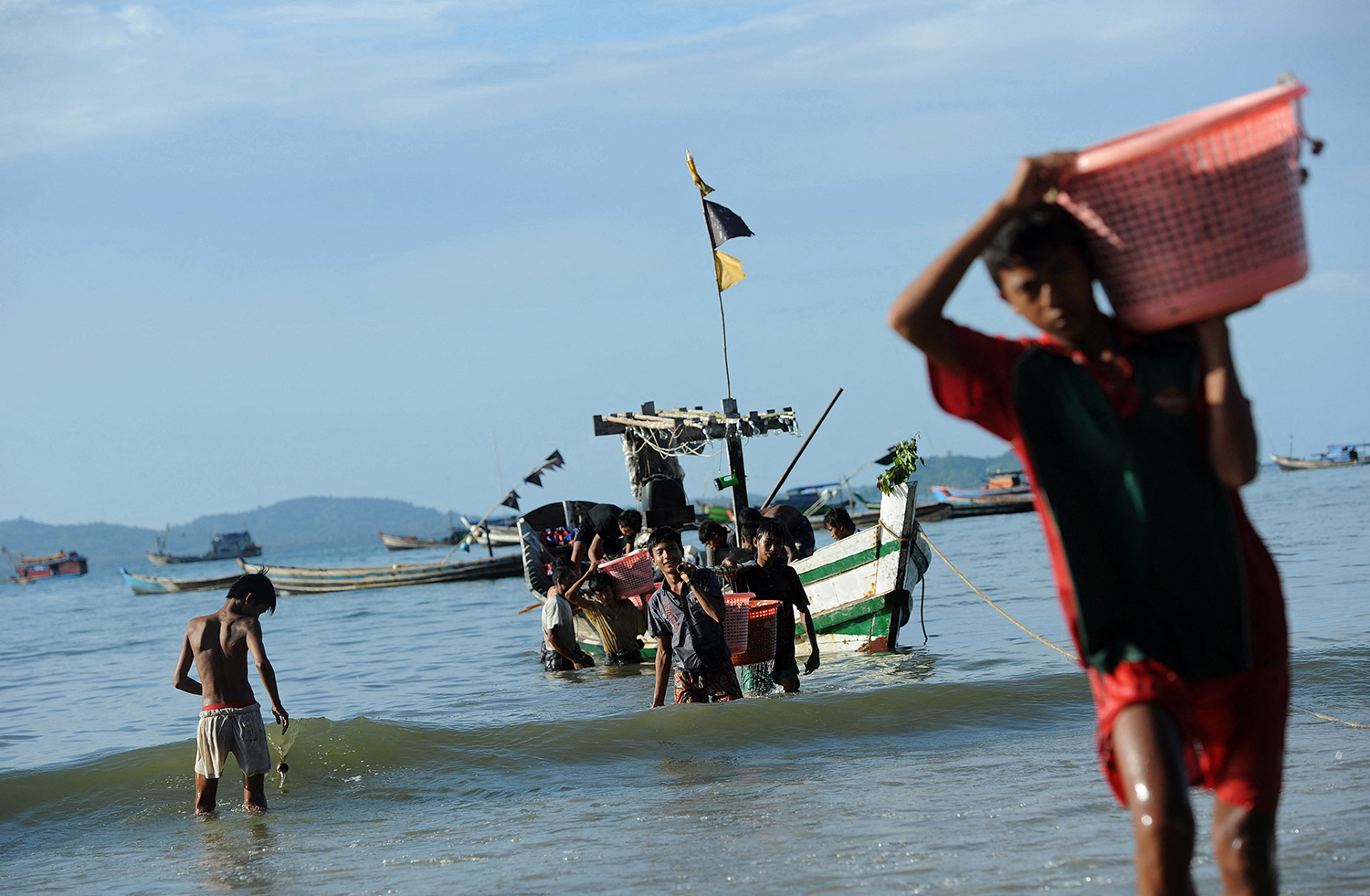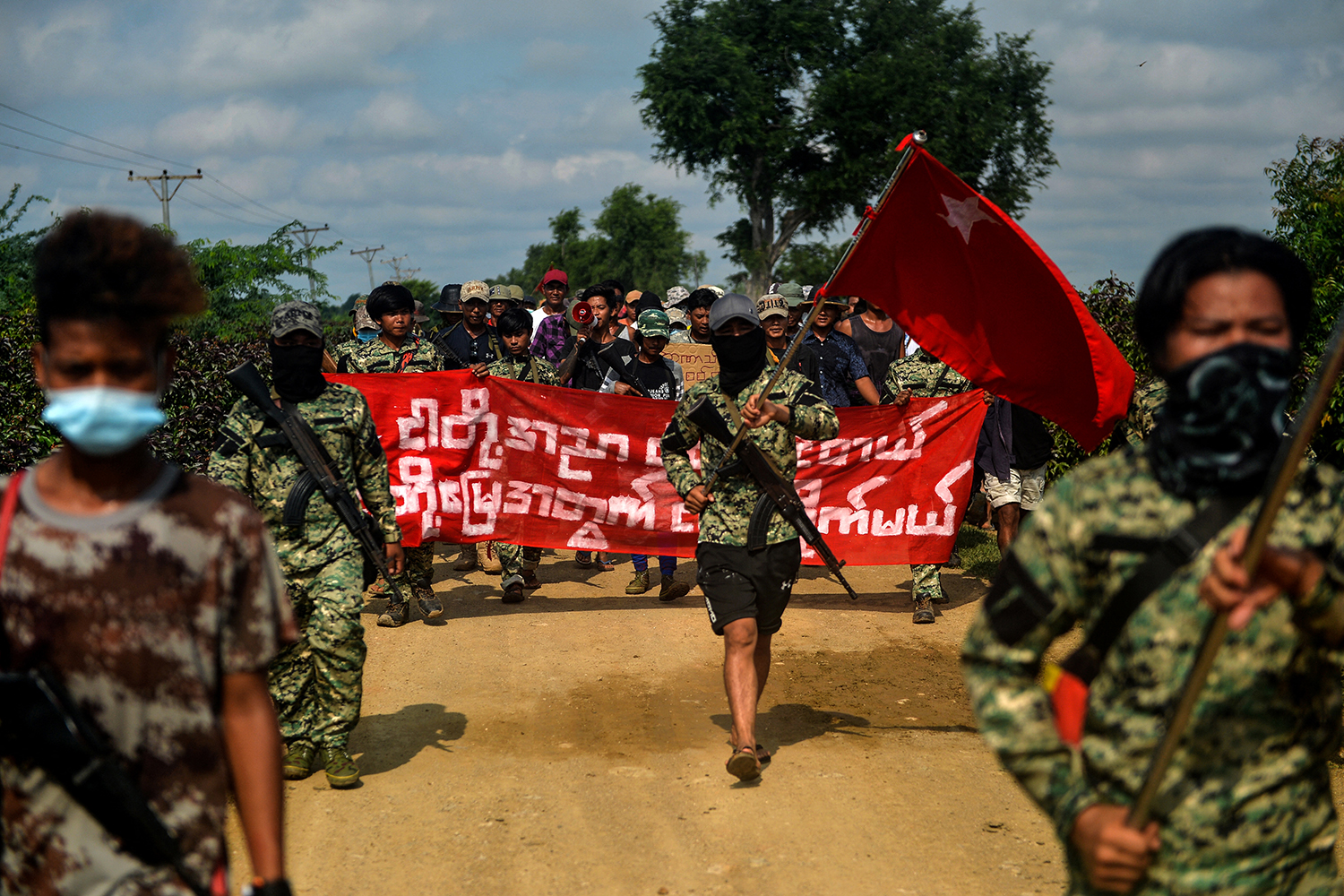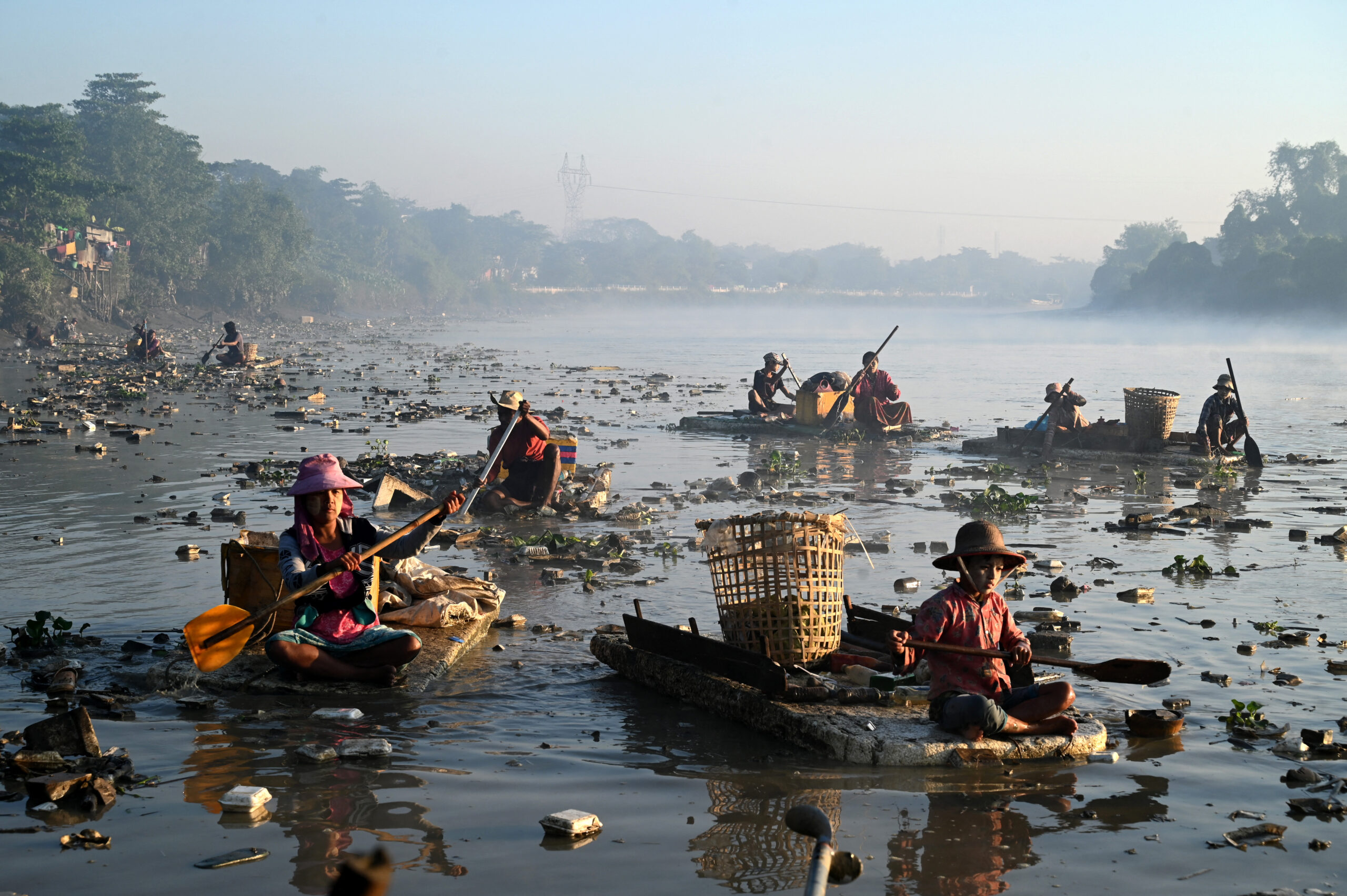A visit to the riverside slaughterhouses in Yangon’s Insein Township where pigs are butchered every night is an experience best avoided by the squeamish.
Words & Photos THUYA ZAW | FRONTIER
WHILE Yangon sleeps, visions of hell are conjured in a series of buildings beside the Hlaing River in the Ywama area of Insein Township. They are the slaughterhouses where hundreds of pigs are butchered every night to supply the city’s markets with pork.

typeof=
There are about 30 slaughterhouses and for seven hours a night, until around 4am, they each process between 10 and 100 pigs. The dingy buildings echo with the ear-splitting, high-pitched squeals of the doomed animals and reek with the smell of their blood and gore.

typeof=
Support more independent journalism like this. Sign up to be a Frontier member.
The animals’ feet are tied in order to immobilise them before they are killed, either by driving a short dagger or a long metal spike into their hearts. Workers carry the limp carcasses to tanks of boiling water into which they are plunged for a few minutes to make it easier to remove their bristly hair and thick skin.
Then follows the butchering of the animals on a production line that begins with the heads being removed and the carcasses split along the spine by butchers wielding cleavers.

typeof=
The sides of pork – as well as by-products such as heads, ears, organs, chunks of fat, intestines, congealed blood and fresh blood, which is used by vendors to brush old meat so that it looks fresh – are then ready to be loaded for delivery to vendors across the city. Only the hair is not sold.

typeof=
The pigs are delivered to the slaughterhouses aboard boats that arrive twice a week from throughout lower Myanmar, some from as far away as Bogale Township. There is no dock on the riverside and the squealing animals are pushed reluctantly into the river, where workers up to their necks in water grab them by an ear and swim them ashore. The animals are confined to the riverbank before being driven to pens where they are held unfed to ensure their stomachs are empty when they are slaughtered. Any undigested food in the pig’s stomach or intestine is washed out under a tap.

typeof=
The slaughterhouses are licensed by Yangon City Development Committee, which also sets hygiene standards. However, the slaughterhouses are extremely dirty and rats are a common sight, darting from the shadows to snatch small pieces of pork. Some of them lack toilets for staff; when Frontier was present, the workers would occasionally urinate in the corner of the slaughterhouse, not far from where the animals were being butchered.

typeof=
YCDC has an inspection office next to the slaughterhouses and the officers come each night and take a cut of meat and half of a liver. Workers said they were unsure if the meat was ever tested because as far as they could recall none of the slaughterhouses had ever been closed for hygiene reasons.
The workers are paid K10,000 a night and the butchers, K15,000. “If we don’t come to work we don’t get paid,” one of the butchers told Frontier. “If we want to eat pork, we have to buy it from the market because all of the meat and body parts have been ordered in advance by vendors,” he said.

typeof=
A vendor at Insein Market, on Hlaing River Road not far from the prison, said she had been selling pork for more than 30 years but had never been to the slaughter houses. “I send my nephew there to place orders,” said the vendor, who sells the meat and body parts from five pigs a day. “Most buyers are big restaurants,” she said, “and I’m sure they also don’t know how the pigs are slaughtered.”


